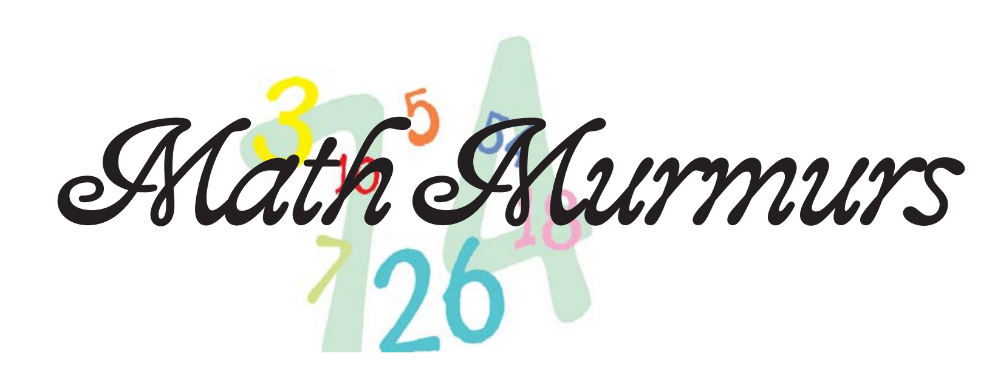|
Featured Resource: Which One Doesn't Belong (WODB)
Submitted By Cole Gailus
One of my favorite resources created by MTBoS (MathTwitterBlogosphere) is the website Which One Doesn’t Belong*(WODB). Just like the Sesame Street game “One of these things is not like the other,” the problems in this resource show you four items, and you have to pick the odd one out. WODB problems, however, are so much more than the Sesame Street version because they are designed so you can make an argument for any of the four choices being different. The challenge is to find the reason(s) for each choice.

For example, in the Which One Doesn’t Belong logo shown, you can say the upper left item does not belong because it is italicized and not bolded. You can also say the lower right image doesn’t belong because it is the only one with white text or because it is the only one with a question mark.
While the questions may seem simple on the surface, when used strategically, WODB can encourage students to think deeply about math topics such as numbers, shapes, equations, and graphs. Trying to find all the answers inspires flexibility of thinking and reinforces the idea that there is not always just one right way to solve a problem. Students need to take the time to pick apart the details of each image to compare them. To justify their choices students have to build strong, defendable arguments using proper vocabulary.
The website is organized into three categories: Numbers, Shapes, and Graphs. There are sets appropriate for all grades, from early elementary up to high school. I love that some of the sets are so accessible and thought-provoking that the same problem can inspire interesting discussions whether the class is filled with kindergarteners or high school seniors. There are also incomplete sets with missing elements that lead to a whole new level of open challenge, where students need to generate items that follow the WODB rules to complete the problem.
Here are just a few examples of how teachers have been using WODB in their classrooms.
- Nora Greene (@GreeneMathTeach) explains how she turned WODB into a game: https://noraagreene.com/2015/04/06/you-down-with-wodb-yeah-you-know-me/
- A. O. Fradkin (@aofradkin) plays WODB with kindergarten and second-grade students: https://aofradkin.wordpress.com/2016/10/07/as-many-opinions-as-there-are-shapes-fun-with-which-one-doesnt-belong-a-shapes-book/
- Jennifer Wilson (@jwilson828) describes how WODB was used in professional development as well as in precalculus and geometry classes: https://easingthehurrysyndrome.wordpress.com/tag/wodb/
- Sahar Khatri (@khatrimath) explains how she used WODB as a warm-up activity with her sixth graders and how she altered the activity based on the first run (also, some practical suggestions for using Plickers in class): https://mskhatri.wordpress.com/tag/wodb/
- Tracy Zager (@tracyzager) describes the great math conversations she has with first graders about WODB: https://tjzager.com/2016/05/13/straight-but-wiggled/comment-page-1/
- Tina Palmer (@TPalmer207) explores special quadrilaterals through WODB: http://palmersponderings207.blogspot.com/2015/04/which-one-doesnt-belong-and-mp3.html
- Jonathan Schoolcraft (@jschool0218) describes the project he assigned his students and shares the creative results: http://algebracraft.blogspot.com/2016/05/which-one-doesnt-belong-project-day-1.html
Have you used WODB in your classroom? If so, how? What have you found that works or does not work for you? Send your stories to atmim.murmurs@gmail.com to be featured in next month’s Math Murmurs.
* WODB.ca was started by Mary Bourassa based on the book “Which One Doesn’t Belong” by Christopher Danielson.




